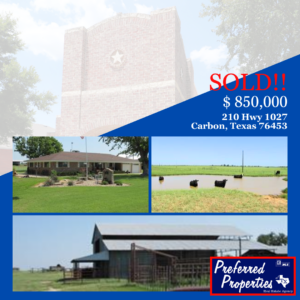The spring is the best time to sell. There are many reasons why spring is a great time to sell, including the better weather, increased sale prices, as well as an increase in buyer demand. These tips will help you make the most out of your time in the market.
Here are five ways to increase your chances of selling land quickly and at a good price this spring.
Tip #1: Bring your Listing up to Date
Replace outdated photos, videos and drone images with newer ones that reflect the current market.
Many sellers list their property in the winter, but then do not update it once spring arrives. This can actually work against you because buyers will assume that your property is on the market since it has gray and snowy photos or videos. If it is clear that your photos were taken during the winter months, you should invest in a new set of images.
Tip #2: Spring Clean Up
April showers can bring mud, weeds and more.
It’s important to have your property ready for showings in the spring. However, what you do will depend on your marketing strategy and how your land will be used. Plan to at least clear access roads to make it easier for agents and potential buyers to get to where they need.
Tip #3: Look for Areas that are Boggy
Wet spring weather is not only a problem for muddy land, but can also cause other problems.
Poor soil composition and improper drainage are two of the most common causes for land bogging. Pest problems, foul odors, and difficulty with building and/or planting can also accompany land bogging.
Stop by your property after a heavy rain to check if there is any bogged ground and, if needed, implement a solution. This type of improvement can increase the value of your property and let buyers know that drainage issues have been addressed.
Tip #4: Check the Comps
Always price your land to sell. It doesn’t necessarily mean you should undervalue your land, but you must pay attention to what the competition in your area is doing, especially during the spring when the competition is high.
If you are updating an existing listing or if you just want to jump on the market, consider the nuances of the high-inventory markets and price your home accordingly. You’ll have a lower chance of continuing the sales process well into the summer.
Tip #5: Rethink Your Marketing Strategy
The spring is a season of renewal. This applies to marketing strategies as well. The better weather allows you to take more photos and videos that can be used in your marketing. Spring season means more agents and buyers are interested in your listing. You can make both of these factors work for you by increasing your marketing efforts and tapping into new channels to get as many people as possible interested in your property.
Contact Preferred Properties of Texas today to get started!









